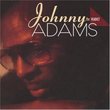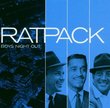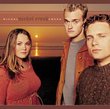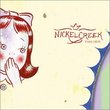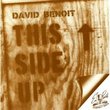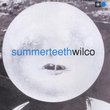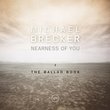| All Artists: John [Composer] Adams, John Adams, BBC Symphony Orchestra Title: John Adams: The Dharma at Big Sur/My Father Knew Charles Ives Members Wishing: 3 Total Copies: 0 Label: Nonesuch Original Release Date: 1/1/2006 Re-Release Date: 9/26/2006 Genre: Classical Styles: Forms & Genres, Concertos, Historical Periods, Modern, 20th, & 21st Century, Instruments, Strings, Symphonies Number of Discs: 2 SwapaCD Credits: 2 UPC: 075597985726 |
Search - John [Composer] Adams, John Adams, BBC Symphony Orchestra :: John Adams: The Dharma at Big Sur/My Father Knew Charles Ives
 | John [Composer] Adams, John Adams, BBC Symphony Orchestra John Adams: The Dharma at Big Sur/My Father Knew Charles Ives Genre: Classical
Featuring two highly-acclaimed commissioned orchestral works, The Dharma At Big Sur and My Father Knew Charles Ives, performed by the BBC Sumphony with Adams himself conducting. While panoramic in scope, these multi-part p... more » |
Larger Image |
CD DetailsSynopsis
Album Description Featuring two highly-acclaimed commissioned orchestral works, The Dharma At Big Sur and My Father Knew Charles Ives, performed by the BBC Sumphony with Adams himself conducting. While panoramic in scope, these multi-part pieces are also deeply personal in nature. Described as "autobiographical sound memories" by the BBC, they evoke the well-traveled American composer's east coast/west coast life and wide-ranging musical education. Similarly Requested CDs
|
CD Reviews2 great works, but 2 discs? Michael Suh | 10/08/2006 (5 out of 5 stars) "I have to say I was getting worried that John Adams was becoming a has-been. El Nino's first half was much better than the second, I didn't particularly like Transmigration and I defy anyone to listen to his 2001 piano work American Berserk and tell me it's any good. But after this release, I stand humbly corrected -- he's still, in my opinion, America's, if not the world's, best living composer. Dharma at Big Sur is scored for an electric violin and orchestra and uses a tuning system that's not well-tempered. What really makes this work special is the way the electric violinist plays soulfully and beautifully above the orchestra for almost the entire work in a sliding style I've never heard before in classical music. The first movement "A New Day" with its quiet and contemplative opening really feels like it's the creation of an entire universe. The climax of the second movement might be the most satisfying conclusion to any of Adams's works to date. Dharma is an absolute masterpiece. My Father Knew Charles Ives is wonderful too, even if it's not as powerful or moving as Dharma. The work is both an homage to Ives and a reflection of Adams' life. Clearly, Adams had a great childhood. The first movement, Concord, is playful -- the clearest tribute to Ives, since it's sounds structurarlly similar to his Fourth of July. The chaos in Adams' Concord is a little more rigid than Ives', but it's still fun. The second movement, "The Lake", features a beautiful clarinet line that evokes the composer's father. The scurrying of the last movement, "The Mountain", seems needlessly frenetic at times, but the cathartic ending that results of it makes the voyage worth it. My one bone to pick is with Nonesuch. The two works together represent about 52 minutes worth of music -- an amount that many would already consider stingy on a single CD, especially when other works like Guide to Strange Places go unrecorded. So why put these two works on 2 CDs? Is it to justify the $20 sticker price? An artistic statement to completely separate the two works? It just seems silly. But it's also forming a nasty pattern of sub-30 minute CDs that really should stop. People want to hear the astonishing sound world that Adams creates -- why try to limit it to 25 minutes at a time? Buy this disc, even if it's split into 2 pieces. It's the best of his works yet!" New tricks from the old dog... Jeff Abell | Chicago, IL USA | 11/20/2006 (5 out of 5 stars) "The music of John Adams has always been both distinctively personal and at the same time evocative of numerous other kinds of music. In that regard, it's Post-Modern in the best sense of the word: able to combine old things in new and provocative ways. If there were echos of 1940s Big Bands in Adams' "Fearful Symmetries," and a near-quote from Stravinsky's "Song of the Nightingale" in Adams' "Slonimsky's Earbox," then this new double CD is a continuation of that trend. The source for Adams' collage technique is clearly Charles Ives: what made "The Transmigration of Souls" into such a beautiful piece is the use of Ivesian techniques of collage to create a deeply American music of profound emotional impact. So "My Father Knew Charles Ives" is the latest manifestation. I would caution buyers who don't know Ives' "Three Places in New England" that you almost need to know that work before you hear Adams' piece to understand how fully Adams has modeled his music on Ives. The Dharma at Big Sur is a double homage as well. The first movement is inspired by Lou Harrison (who was my teacher) and the second movement by Terry Riley (who's a friend), so it was interesting to hear how Adams managed to be himself while evoking the work of two other composers. My only quibble with this beautiful sounding and looking disk is the wastefulness of issuing it on two CDs. Even if Nonesuch only makes you pay the price of a single CD, the two works together are barely an hour long, and it just seems a little over the top to put each work on its own CD. But hey, I guess if they were issuing MY music that way, it wouldn't seem overdone." Gorgeous and Accomplished William Michaels | Hillsborough, NJ United States | 11/16/2006 (5 out of 5 stars) "More evidence that John Adams is one of the world's greatest living composers. Both works are full of the beauty and complexity that we have come to hope for from the composer of Nixon in China, Harmonielehre, and Century Rolls. The Ives piece is possibly the most brilliant imitation of another composer I have ever heard. Highly recommended to any serious music lover."
|

 Track Listings (1) - Disc #1
Track Listings (1) - Disc #1